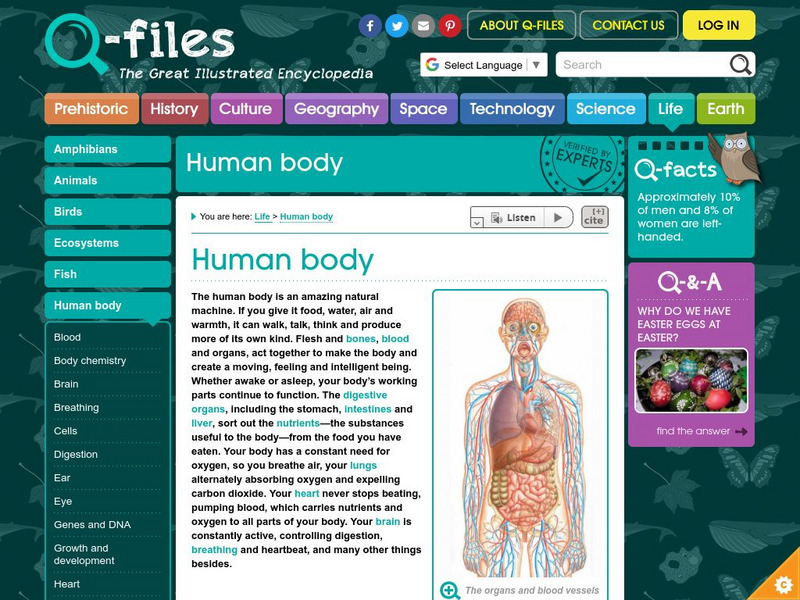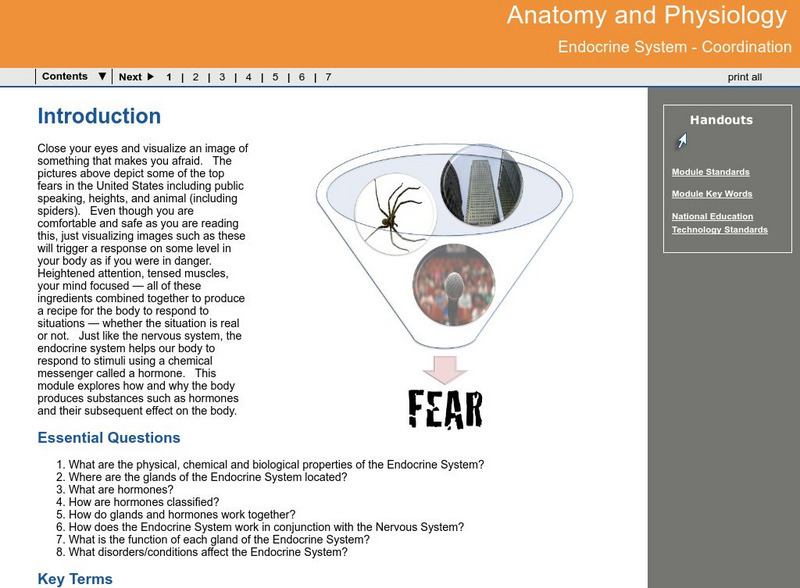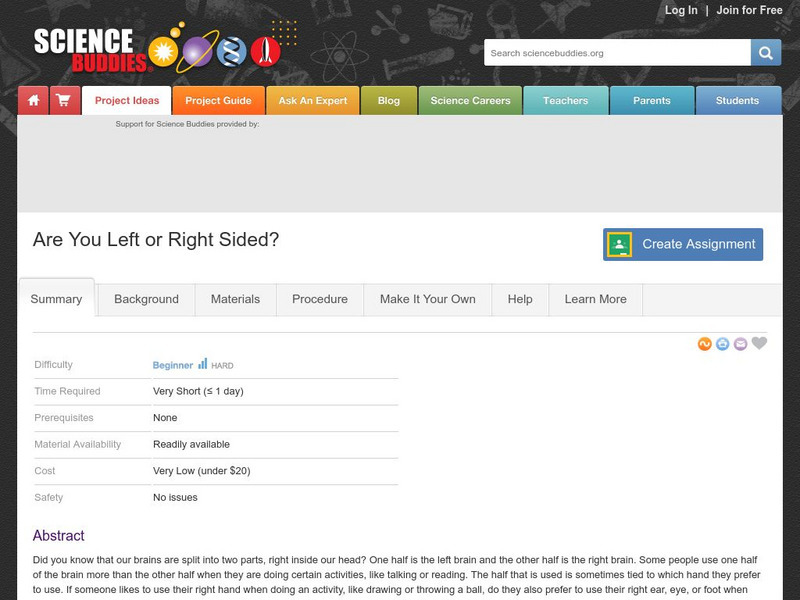Untamed Science
Untamed Science: Biology: Human Biology
Learn about the basic organization of the body's organs and the major organ system.
Science Buddies
Science Buddies: Can Your Body Temperature Tell the Time of Day?
If you have ever had to adjust to a new time zone, you have noticed that it takes a while before you start to feel normal again. By shifting your sleep and activity schedule, you have altered the pattern of your body's circadian rhythms....
Open Curriculum
Open Curriculum: Homeostasis and Regulation in the Human Body
This article helps students identify the process by which body systems are regulated so that they remain stable.
Untamed Science
Untamed Science: Biology: Human Biology: Excretory System
Explore how the human body rids itself of wastes with the function of the kidneys.
Alabama Learning Exchange
Alex: As Large as Life a Poster of a Human Body System
This is a student led exploration of the systems of the human body through art and self-expression. Groups will cooperatively develop a poster, the size of a fifth-grade student, and will accurately depict the assigned system of the...
Alabama Learning Exchange
Alex: The Human Body Inc.: What's an Arm and a Leg Worth?
In this technology-based project, students will take on the role of a legal defense team and prepare the court defense for a body organ that is currently an employee of Human Body Inc.. Due to recent cost increases, the Human Body has...
PBS
Pbs Learning Media: Map of the Human Heart
See how the human heart moves blood through the body in this animated feature from the NOVA: "Cut to the Heart" Web site.
National Cancer Institute at the National Institutes of Health
Seer Training Modules: Introduction to the Muscular System
Self-guided learning activity where students learn about the structure and function of the human muscular system. There is a short quiz at the end of the lesson to check for understanding.
National Cancer Institute at the National Institutes of Health
Seer Training Modules: Introduction to the Lymphatic System
Self-guided learning activity where students learn about the structure and function of the human lymphatic system. There is a short quiz at the end of the lesson to check for understanding.
National Cancer Institute at the National Institutes of Health
Seer Training Modules: Introduction to the Nervous System
Self-guided learning activity where students learn about the structure and function of the human nervous system. There is a short quiz at the end of the lesson to check for understanding.
National Cancer Institute at the National Institutes of Health
Seer Training Modules: Introduction to the Cardiovascular System
Self-guided learning activity where students learn about the structure and function of the human cardiovascular system. There is a short quiz at the end of the lesson to check for understanding.
National Cancer Institute at the National Institutes of Health
Seer Training Modules: Introduction to the Digestive System
Self-guided learning activity where students learn about the structure and function of the human digestive system. There is a short quiz at the end of the lesson to check for understanding.
Science Buddies
Science Buddies: I See a Full Moon Rising, and Shrinking, or Do I?
The moon appears bigger at the horizon just as it is rising over the treetops, than it does later in the evening when it is overhead. This is because our perception of its size changes based on where it is in the sky. In this human...
Science Buddies
Science Buddies: Do You Love the Taste of Food? Find Out if You're a Supertaster
To supertasters, the flavors of foods are much stronger than to average tasters. This can explain why some people are more picky about their food than others, because they experiences tastes in a much stronger form. Find out if you are a...
Inner Body
Innerbody: Digestive System
Take a look inside the human body's digestive system. This site features diagrams of the digestive tract and each part is accompanied by labels and descriptions. Just select an organ by moving the mouse over its image.
OpenStax
Open Stax: Anatomy & Physiology: Anatomical Terminology
This site provides learners with information regarding anatomical terminology. It covers anatomical position, directional and regional terms used, body planes, body cavities and their organs, and the serous membranes.
Enchanted Learning
Enchanted Learning: Human Digestive System
Excellently detailed drawing (with labels) of the digestive system with an accompanying explanation of the digestive process. Includes a glossary and a blank label me print-out.
Georgia Department of Education
Ga Virtual Learning: Anatomy and Physiology: Endocrine System
Through informational text, video clips, practice problems, and external assignments, students discover the structure and function of the endocrine system of the human body.
Open Curriculum
Open Curriculum: The Skeletal System
After studying this article, students will be able to identify the functions and structure of bones, types of bones, bone development, parts of bones, types of joints, and bone disorders.
Howard Hughes Medical Institute
Hhmi: Biointeractive: Obesity: The Fate of Fat
See how dietary fat from food we eat travels through the digestive system, and gets packaged and stored in the human body. [2:07]
National Institutes of Health
National Library of Medicine: What's Happening to Your Body?
This lesson plan site focuses on the changes that adolescents go through and delves into their nutritional, physical, and mental health needs.
Science Buddies
Science Buddies: Are You Left or Right Sided?
Our brains are split into two parts, right inside our head. One half is the left brain and the other half is the right brain. Each side of your brain controls different parts of your body and most people are more dominant controlling one...
Science Buddies
Science Buddies: I Love Ice Cream, but It Doesn't Love Me: Lactose Intolerance
Pizza, milk shakes, and ice cream sundaes all contain dairy products, therefore they cannot be eaten by the majority of people around the world. Dairy products contain the sugar molecule lactose, and the majority of people on the planet...
















